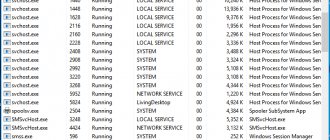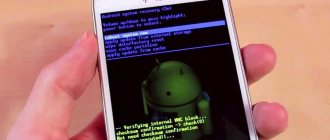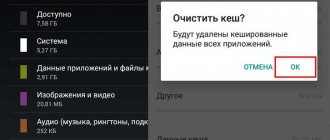About five years ago, it was convenient to think that with the maximum amount of storage you would definitely not experience problems.
But now it’s easy to get confused about how much you need. The step between options varies from 5,000 ₽ to 18,000 ₽. And the 512 GB option seems unnecessary.
In recent years, 4K video has appeared, which will beat any maximum, and system optimization tools that quietly save space.
Below we will look at the volume of different data: who will need how much memory and whether it is realistic to get by with the basic model, say, iPhone 11 with 64 GB, in 2020.
For convenience, under each item we will consider the total volume.
Basic functionality requires an average of 20 GB
Current screenshot from my iPhone
No matter how much the developers optimize the weight of the operating system, it requires at least the same amount on top for it to work.
Those whose storage was filled to capacity at least once noticed how their device began to slow down mercilessly. This happens because the system does not have enough space to store temporary files.
iOS 13 takes up 7 GB on average, and you should allocate between 10 GB and 30 GB for work. This also includes the 10% free space required for the drive to operate as efficiently as possible. Let's take the average.
Used: 20 GB
What is smartphone RAM
RAM is a volatile resource that is necessary for the currently needed data for the operation of the smartphone. This could include an application you're running, a page you're opening in your browser, or an email you're reading. In short, RAM (Random Access Memory) links the processor and the operating system, as well as installed applications.
Since RAM depends on energy, without it, RAM does not work, i.e., after turning off the power, all data is reset to zero. Despite this, RAM remains high-speed memory, because the performance of your smartphone depends on it. The more RAM, the greater the productivity, but if you have a small amount of memory, your phone will experience lags and slowdowns.
Inside the system, the entire amount of RAM is divided into system, user and accessible components. Let's take a closer look at each.
System
This part of the memory contains operating system data, as well as various utility applications. It is this memory department that is one of the first to be filled with information. It follows: the faster the smartphone’s memory is, the faster the operating system loads.
Custom
After loading the OS, it is the turn of the user memory, which contains the executive data of various applications that you have downloaded to your smartphone.
Available
This section is reserved by the operating system. This was done to avoid problems, as well as to quickly launch applications.
Popular apps weigh more than they seem
It happens
Applications like VK, Instagram and Telegram with WhatsApp themselves take up about 100 MB of memory. This is not enough, even if you install a dozen of them.
But that's not all: the more often you use them, the more temporary data accumulates. Space is taken up by files, voice messages and videos that you receive in chats.
Some programs delete their cache immediately, while others store it until you erase it yourself.
For example, a couple of days ago a friend came up with a problem: 64 GB were full, of which 40 GB were occupied by Telegram . An extreme case, but real.
Let's say you have a set of 20 applications ranging from 100 MB to 300 MB. There will be instant messengers, social networks, banks, government services and store applications. We will get about 4 GB and add another 5 GB for cache.
Will be used: 29 GB
Learn to clear the cache of all applications
An example is Instagram. The popular social photo network app actively caches all the photos you view so you don't have to download them a second time. On the one hand, this looks more than logical and even cool, but it takes up a lot of space in the memory of your smartphone.
The solution in this and many other cases is to remove and reinstall the programs . But in some cases, developers will provide you with built-in cache cleaning tools in the settings - it’s even easier.
Videos and photos can take up the most space
Even if you're not a video shooter, the wrong settings will quickly fill up your space. See for yourself, the video takes a minute:
- 400 MB at 4K, 60 fps
- 270 MB at 4K, 24 fps
- 175 MB at 1080p, 60 fps
At maximum, one birthday party will turn into a nightmare for your 64GB iPhone. Ten minutes of excerpts add up to almost 4 GB, and we haven't touched the photos yet.
Let's say you don't need to shoot in this resolution, so we take 1080p for calculation.
Depending on the format and compression method (JPEG or HEIF), one camera image weighs from 1 MB to 7 MB. Let's take the average 3.5 MB.
There will be the greatest variation when calculating media space. If you take the number of files and look at their volume, each will have its own combination.
Some only take photographs, others constantly make videos, and the third temporarily stores memes and snaps from TikTok, uploading everything else to the cloud. The latter need a maximum of 1 GB for the buffer.
Data close to popular usage are as follows:










